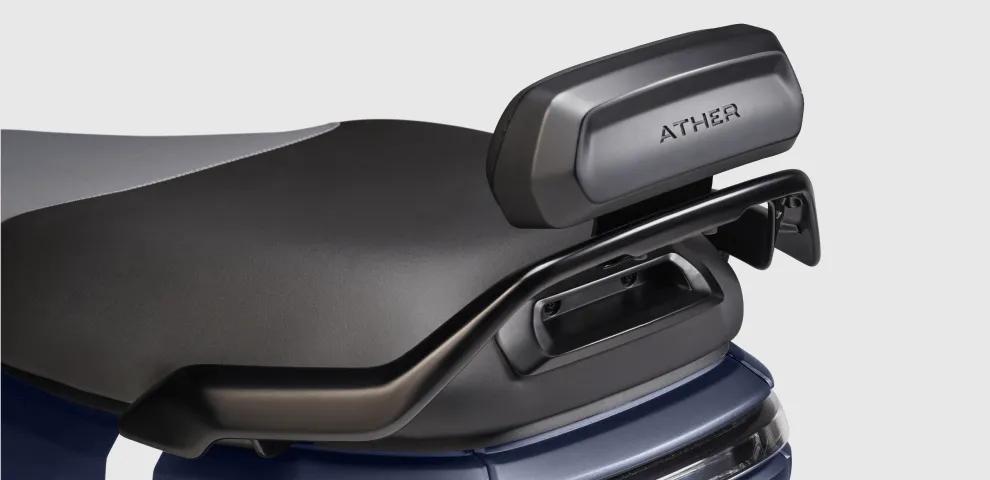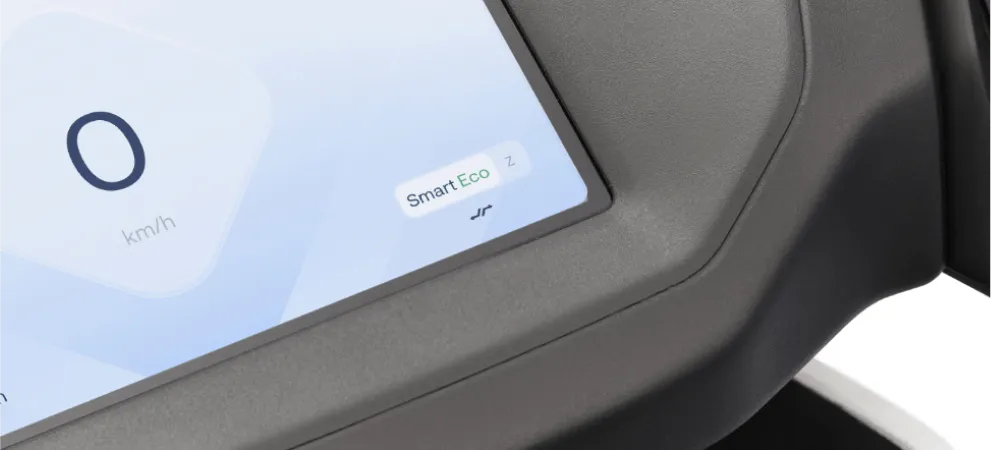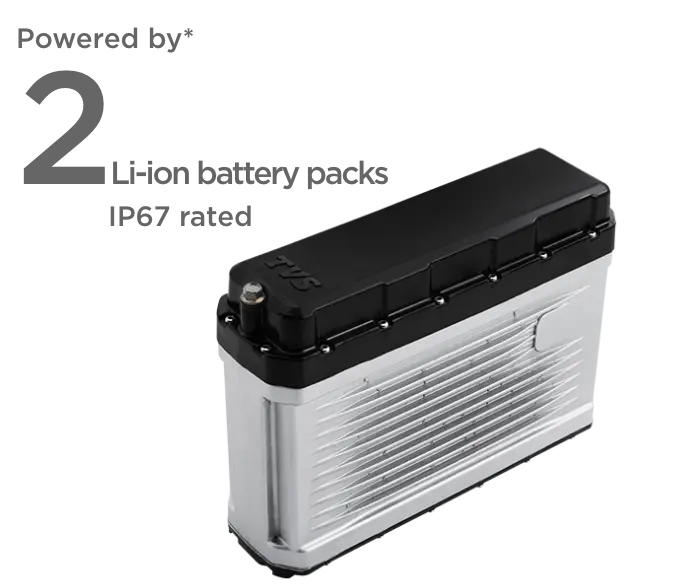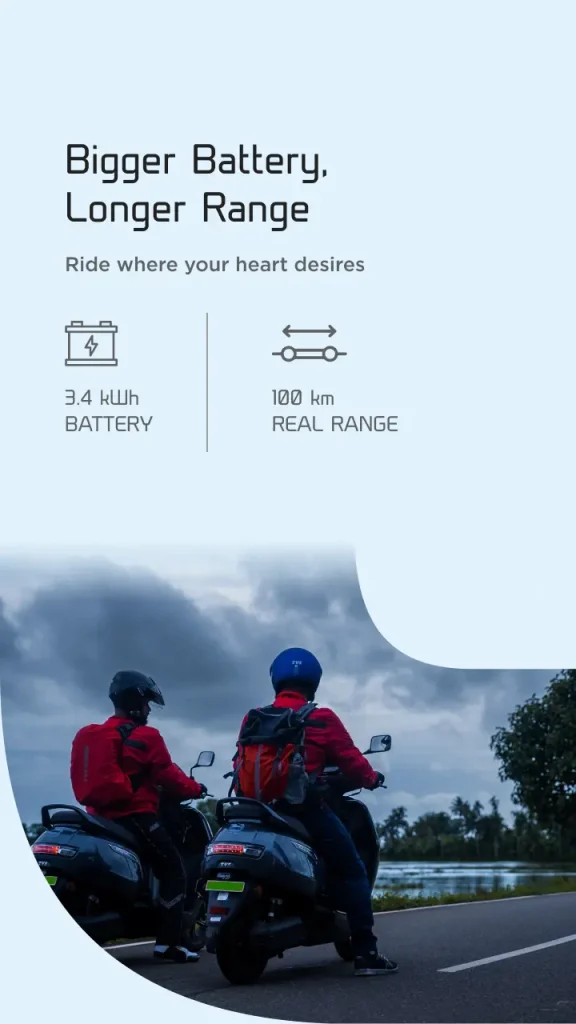The electric scooter market has been witnessing a surge in demand, with more players entering the arena to offer eco-friendly mobility solutions. Among the contenders, Ather Energy and TVS Motor Company have established their presence with the Ather Rizta Z and the TVS iQube S, respectively. Both scooters target the urban commuter segment with their electric powertrains and advanced features. In this article, we delve into a detailed comparison between the Ather Rizta Z and the TVS iQube S across various aspects to help potential buyers make an informed decision.
Design:

The design of a scooter plays a crucial role in attracting customers. The Ather Rizta Z boasts a boxy and mature design language with minimal cuts and creases, emphasizing practicality. It features a horizontally placed LED headlight and a flat, long seat with a pillion backrest, catering to the needs of family-oriented riders. On the other hand, the TVS iQube S follows a similar design approach but appears relatively compact. It incorporates a DRL integrated into the handlebar cowl and lacks a pillion backrest. While both scooters offer a modern aesthetic appeal, the choice between them boils down to individual preferences regarding design elements.
Features:

In terms of features, both the Ather Rizta Z and the TVS iQube S come equipped with a host of advanced functionalities. The Rizta Z stands out with its fully digital instrument console supporting smartphone connectivity for Google Maps, live traffic data display, and auto reply to calls and WhatsApp preview. Additionally, it offers two ride modes, traction control system, mobile charging, auto hold, reverse mode, and regenerative braking feature called Magic Twist. On the other hand, the iQube S offers navigation, call and SMS alerts, side-stand cut-off, ride modes, OTA updates, and geo-fencing. While the Rizta Z boasts a more extensive feature set, the iQube S holds its ground with a competitive array of functionalities.

Motor and Battery:

Efficient motor performance and battery range are crucial factors influencing the practicality of electric scooters. The Ather Rizta Z offers two battery pack options – 2.9kWh and 3.7kWh, providing ranges of 123km and 160km, respectively, with a top speed of 80kmph. In comparison, the TVS iQube S is equipped with a 3.4kWh motor offering a range of 100km and a top speed of 78kmph. While both scooters deliver commendable performance, the Rizta Z holds an advantage with marginally higher top speed and significantly more range, enhancing its usability for daily commuting.
Hardware:
Both the Ather Rizta Z and the TVS iQube S feature similar hardware components, including telescopic front forks, a single rear shock, front disc, and rear drum brakes, along with 12-inch alloy wheels. These components ensure a balanced ride quality and effective braking performance for urban commuting. Therefore, there is a parity between the two scooters concerning hardware specifications, offering riders a consistent experience in terms of handling and braking.
Price:

Price often plays a decisive role in the purchase decision of consumers. The Ather Rizta Z is competitively priced at Rs. 1.25 lakh for the 2.9kWh battery variant and Rs. 1.45 lakh for the larger battery option (ex-showroom, Bengaluru). In contrast, the TVS iQube S is priced slightly higher at Rs. 1.46 lakh (ex-showroom, Bengaluru). Despite the marginal price difference, the Ather Rizta Z offers more value for money with its comprehensive feature set, superior performance, and lower asking price, making it an enticing proposition for potential buyers.
Conclusion:
In conclusion, both the Ather Rizta Z and the TVS iQube S present compelling options in the electric scooter segment, catering to the needs of urban commuters seeking eco-friendly mobility solutions. While the Rizta Z excels in terms of design, features, performance, and value proposition, the iQube S holds its ground with a competitive feature set and robust build quality. Ultimately, the choice between the two scooters depends on individual preferences regarding design, features, and budget constraints. With the electric scooter market witnessing rapid advancements, consumers can expect more innovative offerings from manufacturers in the near future, further enriching the commuting experience with sustainable mobility solutions.
| Aspect | Ather Rizta Z | TVS iQube S |
|---|---|---|
| Design | Boxy and mature design, horizontal LED headlight | Compact design, integrated DRL |
| Features | Fully digital instrument console, smartphone connectivity, ride modes, traction control, regenerative braking (Magic Twist) | Navigation, call and SMS alerts, ride modes, OTA updates |
| Motor and Battery | Options: 2.9kWh (123km range) and 3.7kWh (160km range), top speed: 80kmph | 3.4kWh battery (100km range), top speed: 78kmph |
| Hardware | Telescopic front forks, single rear shock, front disc brake, rear drum brake, 12-inch alloys | Similar hardware components as Ather Rizta Z |
| Price (Ex-showroom, Bengaluru) | Rs. 1.25 lakh (2.9kWh), Rs. 1.45 lakh (3.7kWh) | Rs. 1.46 lakh |
This comparison table provides a quick overview of the differences between the two electric scooters across various aspects, helping potential buyers make an informed decision based on their preferences and requirements.
Frequently Asked Questions (FAQ)
1. What are the key design features of the Ather Rizta Z and the TVS iQube S?
The Ather Rizta Z boasts a boxy and mature design with a horizontal LED headlight, while the TVS iQube S features a compact design with an integrated DRL.
2. What distinguishes the features of the Ather Rizta Z from the TVS iQube S?
The Ather Rizta Z offers a fully digital instrument console, smartphone connectivity, ride modes, traction control, and a regenerative braking feature called Magic Twist. In contrast, the TVS iQube S includes navigation, call and SMS alerts, ride modes, and OTA updates.
3. How do the motor and battery specifications compare between the two scooters?
The Ather Rizta Z offers two battery options: 2.9kWh (123km range) and 3.7kWh (160km range), with a top speed of 80kmph. Meanwhile, the TVS iQube S is equipped with a 3.4kWh battery (100km range) and a top speed of 78kmph.
4. What hardware components are common between the Ather Rizta Z and the TVS iQube S?
Both scooters feature telescopic front forks, a single rear shock, front disc brakes, rear drum brakes, and 12-inch alloy wheels.
5. How do the prices of the Ather Rizta Z and the TVS iQube S compare?
The Ather Rizta Z is priced at Rs. 1.25 lakh for the 2.9kWh variant and Rs. 1.45 lakh for the 3.7kWh variant (ex-showroom, Bengaluru), while the TVS iQube S is priced slightly higher at Rs. 1.46 lakh (ex-showroom, Bengaluru).
6. Which scooter offers better performance in terms of range and speed?
The Ather Rizta Z offers a marginally higher top speed and significantly more range compared to the TVS iQube S, making it more suitable for daily commuting.
7. What are the standout features of the Ather Rizta Z’s digital instrument console?
The Ather Rizta Z’s digital instrument console supports smartphone connectivity for Google Maps, displays live traffic data, allows auto reply to calls, and offers WhatsApp preview.
8. Does the TVS iQube S offer any unique functionalities?
Yes, the TVS iQube S comes with features like navigation, call and SMS alerts, OTA updates, and geo-fencing, enhancing its utility for urban riders.
9. Are there any differences in the braking systems of the two scooters?
Both the Ather Rizta Z and the TVS iQube S feature front disc brakes and rear drum brakes, providing effective braking performance for urban commuting.
10. Which scooter offers better value for money considering its features and price?
The Ather Rizta Z offers more value for money compared to the TVS iQube S, thanks to its comprehensive feature set, superior performance, and lower asking price.